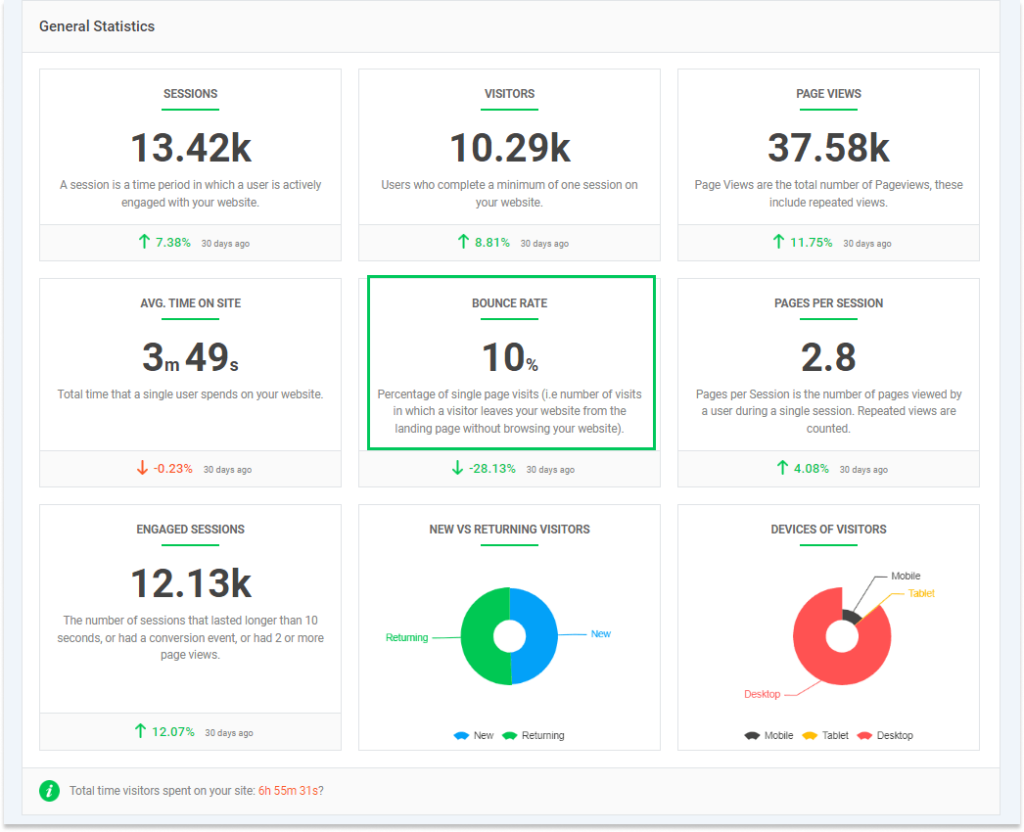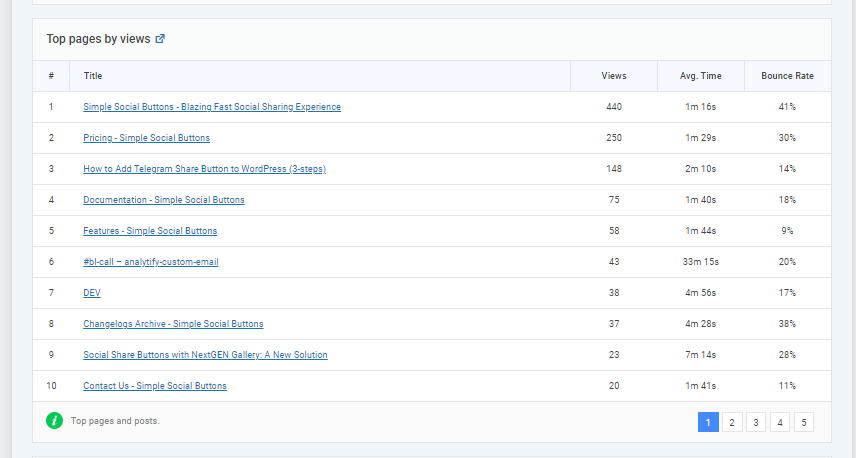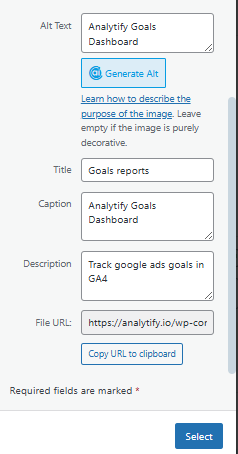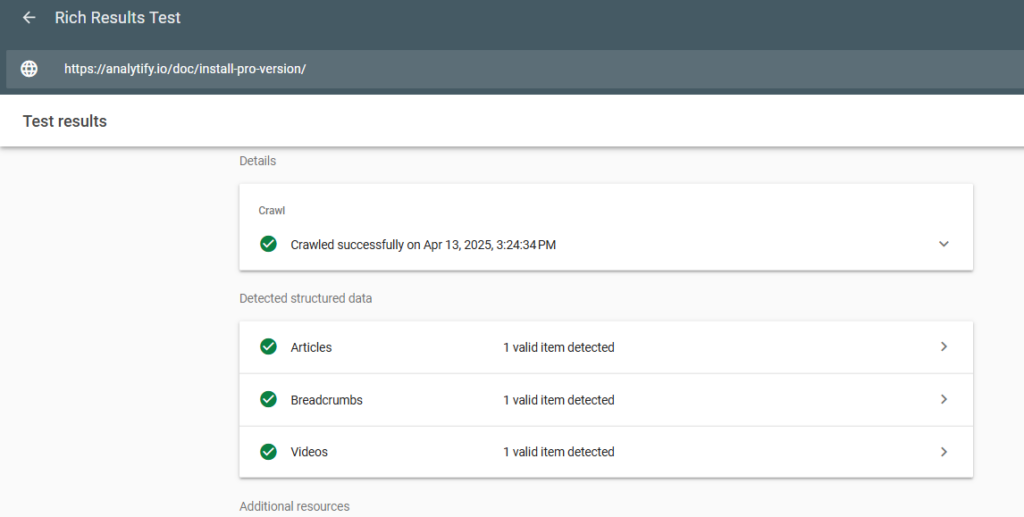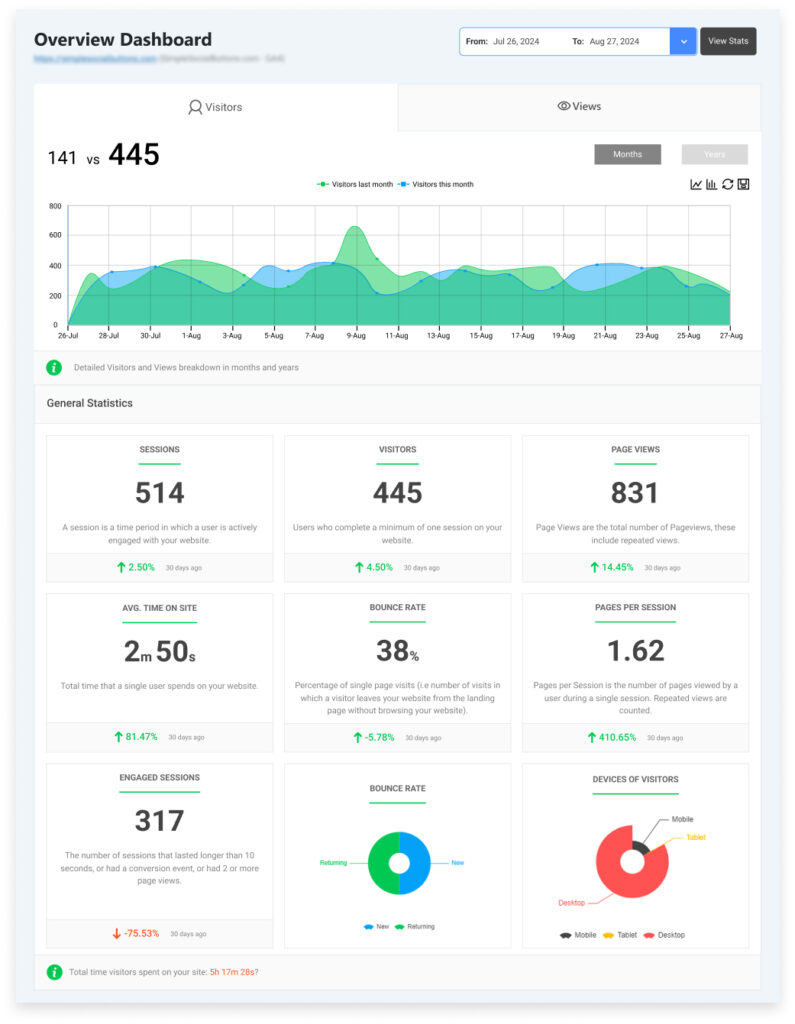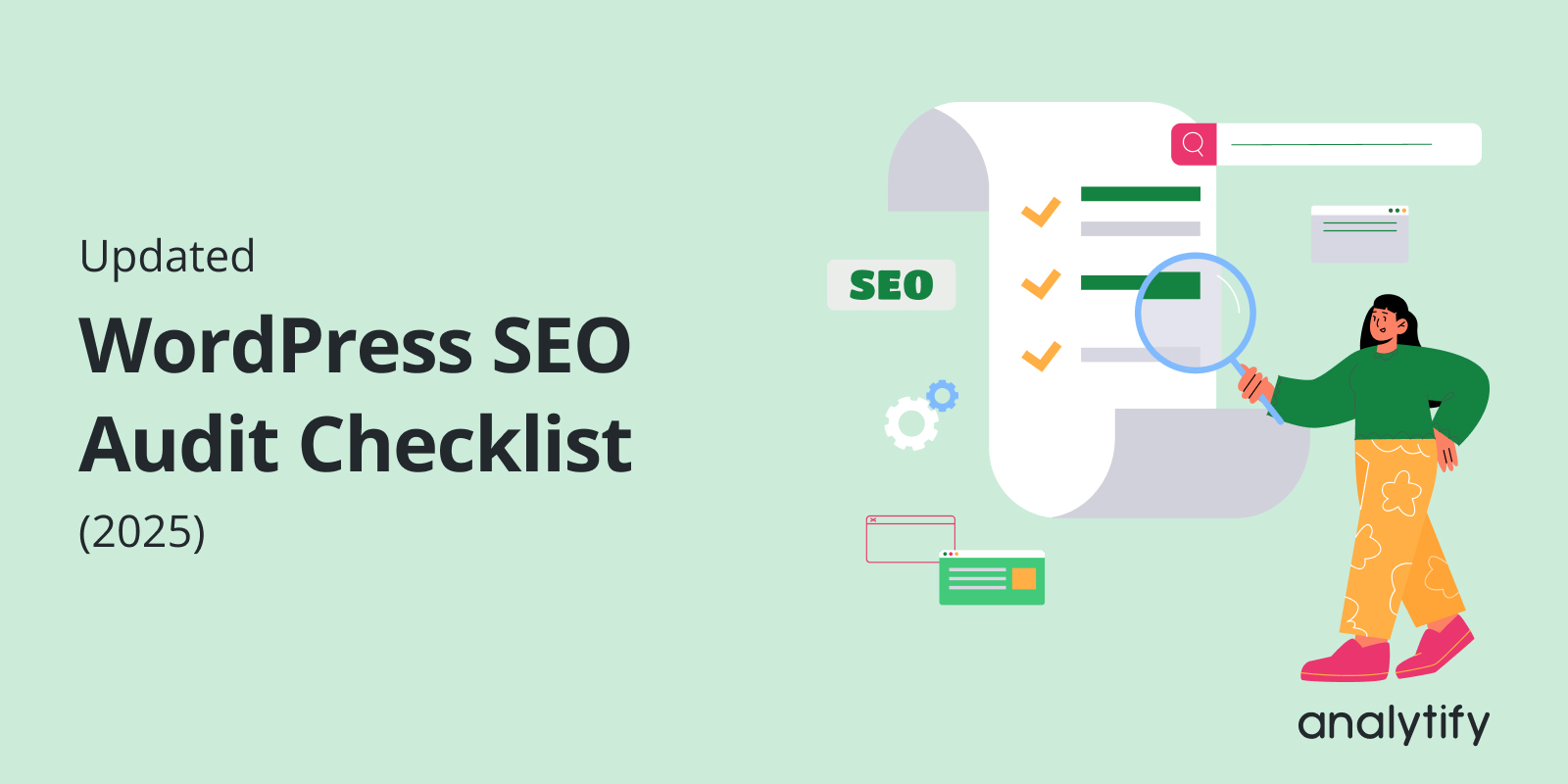
Updated WordPress SEO Audit Checklist (2025)
Are you conducting a WordPress SEO audit?
If not, you could be missing out on important opportunities to improve your site’s performance. A WordPress technical SEO audit is a crucial process to ensure your website is optimized for search engines. It helps you identify problems that could hurt your rankings and find ways to improve your site’s visibility.
In 2025, SEO is more important than ever. With changes in Google’s algorithms, the rise of AI-driven tools, and mobile-first indexing, staying on top of your website’s SEO health is crucial.
In this guide, we’ll walk you through an updated WordPress SEO audit checklist that will help you improve your site’s search engine rankings, user experience, and overall performance.
Let’s get started!
WordPress SEO Audit (TOC):
What is a WordPress SEO Audit?
A WordPress SEO audit is a detailed evaluation of a website’s current SEO performance. The purpose of an SEO audit is to identify issues that can affect search rankings, uncover areas for improvement, and optimize the website for better search engine visibility. By conducting a regular SEO audit, you can ensure that your website stays up-to-date with the latest SEO trends and performs optimally for search engines like Google.
An SEO audit for WordPress websites covers everything from on-page SEO (meta tags, headings, content quality) to technical SEO (site speed, mobile-friendliness, crawlability) and content audits. These audits help businesses identify opportunities for growth and maintain a competitive edge in an increasingly digital landscape.
Types of SEO Audit WordPress
A comprehensive SEO audit for WordPress websites can be divided into three major types:
- On-Page SEO Audit:
On page SEO audit checklist includes the elements on your site that affect SEO, such as content, headings, meta descriptions, and keyword optimization. - Technical SEO Audit:
A technical audit involves analyzing the back-end elements of your site, including server performance, crawlability, mobile optimization, and site speed. - Content Audit:
The content audit assesses the quality, relevance, and optimization of your website’s content. It helps ensure your content aligns with your target audience’s intent and incorporates the necessary keywords effectively.
Key Benefits of a WordPress SEO Audit
Google’s algorithms are continuously evolving, and SEO strategies must adapt accordingly. In 2025, search engines focus more on user experience, mobile-first indexing, and Core Web Vitals. Regular SEO audits ensure that your site stays aligned with these changes and maintains high rankings.
Conducting SEO audits for WordPress websites offers several more key benefits:
- Improved Search Engine Rankings:
Identifying and fixing SEO issues directly impacts how well your website ranks on search engines. Regular audits ensure that your website remains competitive. - Better User Experience:
SEO audits identify usability issues, mobile responsiveness problems, and site speed optimizations, all of which contribute to a better user experience. - Enhanced Site Performance:
A comprehensive SEO audit helps you optimize site performance, ensuring fast loading times, mobile responsiveness, and proper content structure—all essential for both SEO and user satisfaction.
WordPress SEO Audit Checklist: 10+ Key Steps to Follow
Let’s break down the steps for a thorough SEO audit checklist for WordPress websites in 2025.
1. Evaluate Site Health (General Overview)
Before going into the details of the Audit SEO checklist, let’s start with the basics.
First, check your site’s health. If your site is not healthy, it can hurt your SEO efforts.
Here’s what you should evaluate your site health:
- Server Response Time: Your website should load quickly. If the server is slow, search engines might ignore your pages.
- Broken Links: Broken links lead nowhere. This can frustrate users and make search engines think your site isn’t well-maintained.
- 404 Errors: These are missing pages. Make sure no page is showing a 404 error.
- Site Performance: Test your site’s performance. Slow-loading websites are a big SEO problem.
You can use the tools below to check your site health:
Recommended WordPress SEO Audit Tool: You can use Analytify to help you monitor your website’s performance in Google Analytics, also tracking 404 errors, giving you easy access to metrics like bounce rate and page load times.
2. Ensure Mobile-Friendliness
Does your site look good on mobile devices? Google cares a lot about mobile optimization, especially now that it uses mobile-first indexing. This means Google checks the mobile version of your website first to decide your rankings.
You must use the Google Mobile-Friendly Test to see if your site is mobile-ready. It’s simple and gives quick results.
In Google Analytics, check how your mobile traffic is performing. Analytify gives you insights on bounce rates and page engagement on mobile devices, so you can spot and fix issues faster.
3. Analyze Website Speed and Performance
Website speed is crucial. A slow website frustrates users and Google. If your pages take too long to load, you might lose traffic.
Why Speed Matters:
- Faster websites rank better.
- Users stay longer on fast websites.
- Google loves websites that load quickly.
How to Audit:
Use tools like Google PageSpeed Insights or GTMetrix to test your site’s speed.
Use Analytify to get detailed performance metrics from Google Analytics. This will show you which pages are slow, so you can fix them quickly. Analytify is one of the best WordPress plugins that helps you with SEO audits for WordPress websites.
Join 50,000+ beginners & professionals who use Analytify to simplify their Website Analytics!
4. Conduct On-Page SEO Audit
On-page SEO focuses on how well your pages are optimized for search engines. There are a few things to check:
- Meta Titles and Descriptions: Are they clear and contain your keywords?
- URL Structure: Short, simple, and descriptive URLs help with SEO.
- Heading Tags (H1, H2, H3): These tags organize your content and help search engines understand your page.
You can use the following tools:
- Yoast SEO
- Rank Math
- Analytify
You can use the Analytify dashboard to track the performance of your pages by checking your click-through rates (CTR) and average time from Google Analytics. This shows how well your on-page SEO is working.
5. Check Internal Linking Structure
Internal links help search engines and users navigate your site. They distribute page authority and help users find related content. A good internal linking structure is key for SEO.
Why It Matters:
- Internal links help Google crawl your site better.
- They guide users to relevant pages on your website.
- They help spread link equity across your site.
You must ensure that:
- There are no broken internal links.
- Make sure your important pages are well-linked within your site.
You can use Broken Link Checker to check internal linking structure.
6. Audit Site’s Content for SEO Optimization
Your content is the heart of your website. It’s important to make sure your content is valuable and SEO-friendly.
Let’s break it down:
- Keyword Usage: Are you using relevant keywords throughout your content? Make sure to use them naturally, without keyword stuffing.
- Content Quality: High-quality content is a must. It should be helpful, well-written, and answer user questions.
- Multimedia Elements: Images, videos, and infographics enhance the user experience. Ensure these elements are optimized for SEO.
For more detailed insights, see our guide on Google Analytics Audit (A Complete Checklist 2025).
You can use Yoast SEO for a site audit.
Moreover, using Analytify within Google Analytics, you can track how well your content is performing in terms of time on page, bounce rates, and user engagement. If certain pages aren’t performing well, it might be time to update or optimize the content. See how you can find top-performing content using Analytify.
7. Review Technical SEO Elements
WordPress technical SEO audit ensures that search engines can crawl and index your website efficiently. Here are a few key technical elements to check:
- Sitemap: Ensure you have a valid XML sitemap. This helps search engines understand your site structure.
- robots.txt: Make sure this file isn’t blocking important pages from being indexed.
- Canonical Tags: These tags help avoid duplicate content issues. Make sure they are correctly set up on your pages.
You must take the following steps to review the technical SEO elements of your site:
- Verify that your XML sitemap is properly configured and submitted to Google.
- Ensure your robots.txt file isn’t blocking important content.
- Check for canonical tags to avoid issues with duplicate content.
You can use Google Search Console to check all this.
8. Optimize Image SEO
Images can affect your site’s loading speed, and they need to be optimized for SEO. Here’s what to do:
- Alt Text: All images should have descriptive alt text. This helps search engines understand what the image is about.
- Image Compression: Compress your images to ensure they don’t slow down your website.
- File Format: Use WebP or other modern formats for faster loading times.
For optimizing your content images, you need to:
- Add descriptive alt text to every image.
- Use Tiny png or other tools to compress images and speed up your website.
- Convert images to WebP format for faster loading.
9. Evaluate Backlink Profile
Backlinks play a huge role in SEO. They signal to Google that your site is trustworthy and authoritative. Here’s how to evaluate your backlinks:
- Quality of Backlinks: Not all backlinks are created equal. High-quality backlinks from trusted sites help your SEO.
- Toxic Links: Some links can hurt your SEO. Make sure to disavow any harmful or irrelevant backlinks.
You can use tools like Ahrefs or Moz to review your backlink profile. Identify and disavow toxic backlinks using Google Search Console.
10. Perform a Security Check
Security is an important part of SEO. Google rewards secure websites and penalizes those with security issues. Here’s how to ensure your site is secure:
- SSL Certificate: Make sure your site uses HTTPS. This encrypts data and ensures a secure connection.
- Security Plugins: Use WordPress security plugins like Wordfence or Sucuri to monitor and protect your site.
Steps to Take:
- Ensure your site has an SSL certificate in place.
- Use WordPress security plugins like Wordfence or Sucuri to protect your site from attacks.
11. Check for Schema Markup (Structured Data)
Schema markup is a type of structured data that helps search engines understand the context of your content. It can improve the visibility of your pages in search results by enabling rich snippets, which can increase your click-through rate (CTR).
Adding schema markup helps search engines better understand your content, which can lead to rich snippets appearing in search results. These snippets often stand out more and get higher user engagement.
How to Implement Schema Markup:
- Use plugins like Schema Pro or Yoast SEO to add structured data to your pages.
- Ensure that important pages (like articles, products, reviews) have the correct schema.
12. Examine Your Website’s Core Web Vitals
Google’s Core Web Vitals are key performance signals that measure the user experience on your site. They are crucial ranking factors in 2025, focusing on three key areas:
- Largest Contentful Paint (LCP): Measures loading performance. A fast LCP leads to a better user experience.
- First Input Delay (FID): Measures the interactivity of your page. Lower FID means users can interact with the page faster.
- Cumulative Layout Shift (CLS): Measures visual stability. A high CLS score means that elements on the page shift as it loads, leading to a frustrating user experience.
Tools for Testing:
- Google PageSpeed Insights
- Web Vitals Extension
13. Implement SEO Tools to Automate Your Audit Process
SEO audits can be time-consuming, but using the right tools can help you automate the process and stay on top of your website’s performance. These tools allow you to regularly monitor your site and catch issues as they arise.
Recommended SEO Audit Tools:
Analytify:
Analytify is a powerful plugin that simplifies the process of conducting an SEO audit for your WordPress site. By integrating Google Analytics directly into your WordPress dashboard, it provides detailed insights on metrics such as site performance, user behavior, and conversion rates. With its user-friendly interface, Analytify helps you track bounce rates, page load times, and mobile performance, enabling you to spot potential SEO issues and optimize your site for better rankings. Additionally, its integration with eCommerce tracking makes it perfect for businesses looking to monitor product performance and improve their online sales strategy.
- Yoast SEO: Helps optimize on-page SEO.
- AIOSEO: An alternative for on-page SEO and overall optimization.
Regular monitoring through automated SEO audit tools helps you spot issues early. This allows for quick fixes before small problems grow into bigger issues that can affect your rankings.
Analytify can provide real-time data from Google Analytics, helping you stay updated on your SEO metrics. It tracks user behavior, site performance, and engagement metrics, allowing you to adjust your strategy as needed.
Common SEO Audit Mistakes to Avoid
While conducting an SEO audit, there are a few common mistakes you should avoid:
- Skipping Mobile Optimization: Mobile-first indexing is now a ranking factor. Ensure your site is mobile-friendly.
- Ignoring Core Web Vitals: Google prioritizes user experience. Low Core Web Vitals scores can lead to poor rankings.
- Not Fixing Crawl Errors: Ensure search engines can properly crawl your site. Fix 404 errors and redirect broken links.
- Overlooking Content Quality: Content should be high-quality and provide value. Keyword stuffing or poorly written content can hurt rankings.
- Neglecting to Update Old Content: Regularly update your existing content to keep it relevant and optimized.
WordPress SEO Audit: Frequently Asked Questions (FAQs)
1. What is a WordPress SEO audit?
A WordPress SEO audit is a comprehensive evaluation of your website’s SEO performance. It involves analyzing various aspects such as site health, content quality, technical SEO, and user experience to identify areas for improvement and ensure your site is optimized for search engines.
2. Why is an SEO audit important for my WordPress site?
Conducting regular SEO audits helps in:
Identifying and fixing issues that could affect search rankings.
Enhancing user experience by improving site speed and mobile-friendliness.
Adapting to changes in search engine algorithms.
Gaining a competitive advantage by staying ahead in search rankings.
3. How often should I perform an SEO audit on my WordPress site?
It’s recommended to perform an SEO audit at least once every three to six months. However, if you make significant changes to your website or notice fluctuations in traffic, conducting an audit sooner can help address potential issues promptly.
4. Can I perform an SEO audit without technical expertise?
Yes, many SEO audit tools are user-friendly and designed for users without technical backgrounds. Plugins like Analytify integrate with Google Analytics and provide insights directly within your WordPress dashboard, simplifying the audit process.
5. What is the difference between session and user conversion rates in GA4?
In GA4:
Session Conversion Rate: Measures the percentage of sessions that resulted in at least one conversion event.
User Conversion Rate: Measures the percentage of users who triggered any conversion event during their visit, even if they visited multiple times.
Understanding both metrics helps in assessing how effectively your website converts visitors into desired actions.
6. How can Analytify help in SEO audits?
Analytify enhances your SEO audit process by:
Providing detailed insights from Google Analytics directly within your WordPress dashboard.
Tracking key performance metrics like bounce rate, page load times, and user engagement.
Offering eCommerce tracking features to monitor product performance and sales data.
Allowing you to analyze country-wise statistics and shopping behavior funnels.
WordPress SEO Audit: Recap
Performing a regular WordPress SEO audit is essential for maintaining a high-performing, SEO-optimized website. By following the steps outlined in this 2025 SEO audit checklist, you can ensure that your WordPress site remains competitive and visible in search results. Tools like Analytify can streamline the process by helping you monitor key performance metrics and provide insights directly from Google Analytics.
By addressing these key areas and making the necessary optimizations, your website will be better positioned to rank higher, deliver a superior user experience, and adapt to the evolving landscape of SEO.
We hope this article has assisted you in your WordPress SEO Audit.
You may also like to read:
Google Analytics Audit (A Complete Checklist 2025)
9 Best Content Audit Tools To Improve Rankings (2025)
Now, we’d love to hear from you. What WordPress SEO audit tool have you ever found best?


